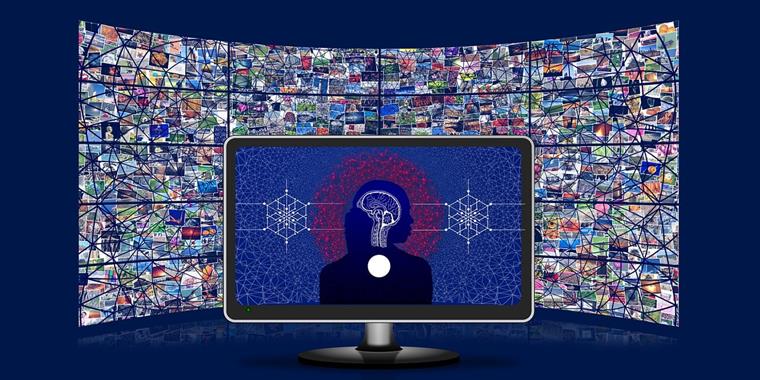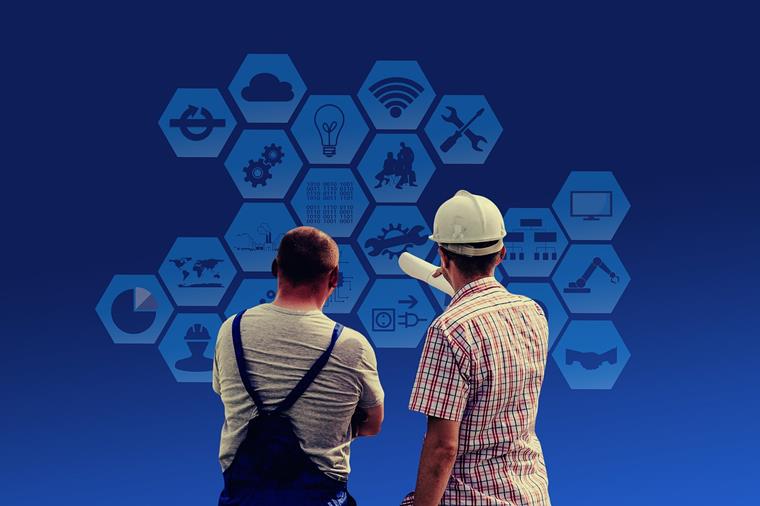Creativity and Math
Our guest today, Michael Kraus, is an expert on the subject of AI in construction. He is also active in research at the Swiss Federal Institute of Technology in Zurich and works as a structural engineer. From an early age, he accompanied his parents on construction sites and the family-owned carpentry business was his guide in the direction of civil engineering.
What fascinates him most about the job of a civil engineer is the creativity that is required to implement a wide variety of projects. Detailed solutions, such as CO2 savings, require creative thinking. He already had a penchant for mathematics and numerical subjects during his studies. Therefore, the decision to specialize in AI was an easy one.
Applications of AI
We ask Michael what we should know about AI in general. He explains to us that the idea of artificial intelligence dates back to the early 1940s. Automation and the understanding of human decision-making processes using technology was already an issue back then. The whole thing only caught on about 15 years ago, because we did not even have the necessary computing power for anything like this before that time.
Nowadays, AI is used in many areas. For example, as voice assistants, parking aids, or spam filters. All of this is based on artificial intelligence.
A sub-form of AI is "machine learning" – many have probably heard about that before. An artificial intelligence searches for a pattern in the existing data sets and develops solutions for it, thus generating knowledge from experience, so to speak.
Many people are also probably familiar with "deep learning" as a special form of machine learning. Artificial neural networks in numerous layers are considered a technical analogy to the brain, which is able to process large amounts of data.
Development Status of AI in Construction
Due to the expansion of computing power in recent years, AI can now be used in the construction industry. An example of this is video and image processing. For example, damage assessments and damage reports are already carried out using artificial intelligence. Furthermore, AI supports surveying technology based on drone recordings, for example, or enables digital construction inspections with automatic analysis. However, all signs point to research here, as the necessary software is sometimes missing.
Artificial intelligence can also support us in the area of structural engineering. Using generative design, the software is able to independently develop a model with detailed alternatives from a target (for example, a bridge structure) and desired parameters (for example, performance, material, load). However, no market-ready product has emerged from research here either.
We can already see: There is a lot possible in theory, but for the projects in our research to be used in practice, it will probably take a few more years. Society’s expectations of AI are currently far too high, not least because of sci-fi books, movies, and video games. Especially in the construction industry, we are nowhere near as advanced as we might like to be. But why is that?
Barriers and Limits of AI in Construction
Let us take a look at a video and image analysis. The Google algorithm has long been able to distinguish images of dogs from cats without any errors. Why is it so difficult to classify “damage” and “no damage” in the construction industry?
The biggest problem in construction, combined with the usually very conservative view of innovations, is that we simply have too little data for artificial intelligence to work with. So there is a lack of material to support the deep learning process of machines.
We hardly have any pictures that have “damage” or “no damage” next to them. So how is AI supposed to learn to differentiate between the two? Creating such a secure data set for both decision cases costs a lot of time and money.
There is also a lack of options for implementing research on generative design. Many manufacturers of software products do not offer programmable interfaces. Dlubal structural analysis programs are one of the few exceptions.
- “As long as this communication between software programs is not possible, AI will not prevail anywhere."
After all, it is hardly reasonable for structural engineers to learn different structural analysis programs, only to be faced with different design checks and then to have to compare them manually again at the end.
Of course, we will also talk about BIM as a digital support in construction. Here, Michael points out that the general willingness in the construction industry to really implement digitization is the biggest hurdle. Without interfaces and a certain degree of transparency, a planning and production chain with an extensive flow of information is simply not possible by digital means.
- “From my point of view, BIM technology is the key to AI."
There is often simply a lack of willingness to get involved in new processes – rather less among students than among instructors, engineering offices, or software manufacturers. Michael lets us know that digging deep into digitization will always cost time and money. But it is necessary. Often, there is not a lack of software, but rather hardware solutions in the implementation of BIM. Not every student can use every software program on their private computer without restrictions.
Future AI in Construction
We certainly agree on one thing: Today's students need to be sensitized and trained in issues such as digitization and AI. Because no matter how much the construction industry in Germany defends itself against innovations – at some point, companies will come from abroad and overwhelm us.
In the future, AI will become increasingly important in the construction industry, especially in early decision-making and design issues. If you want to build a house as a structural engineer, you no longer have to look at ten different houses and wait half an hour each time. The AI calculates the alternatives with a high level of detail and accuracy within a very short time. This makes the work of a structural engineer much easier.
- "I can then show a client directly: If you have a window built in here, the structural engineering aspects change here."
This classic image of AI that will ultimately doom humanity is deeply embedded in people's minds. But do you have to be afraid of artificial intelligence? Viewed realistically: No. The aim of AI research in civil engineering is not to replace structural engineers, but to support them.
Especially in early phases of planning, decisions can be made that would be responsible for more costs and time expenditure at later stages. Of course, sustainability is also an issue that we have to keep in mind. Thanks to AI support, we will be able to build more efficiently and predictably in the future.
Artificial intelligence should relieve us of the work that we do not really have time for, or that is highly repetitive. So we can concentrate on other tasks. Since we will almost certainly face a shortage of skilled workers in the construction industry, we will have to rely on AI. The most important thing at the moment is to create and deepen awareness of this issue. Michael sees politics in particular as having a duty to take the first step as a pioneer for sustainability and digitization.
Michael, what is your favorite building?
When we asked our last question, about his favorite building, he did not have to think twice. For him, one of the most impressive structures is undoubtedly the Golden Gate Bridge in San Francisco. As an example of the highest level of engineering, the bridge, with its span and load-bearing capacity, fascinates him deeply.
We can definitely understand this decision. Thank you for visiting us! Would you like to listen to the full episode? You can find it here, under our Go to Dlubal Podcast . Enjoy listening!




